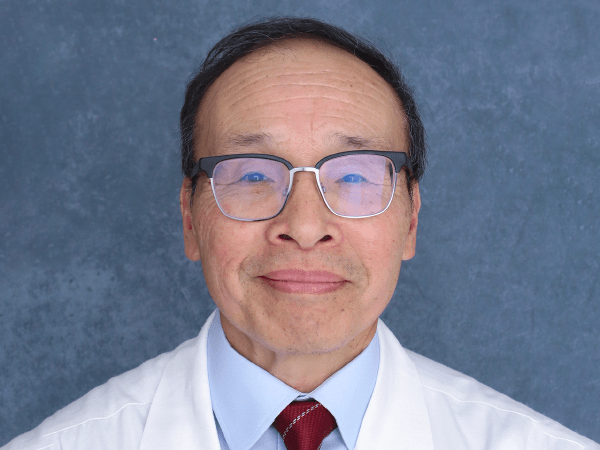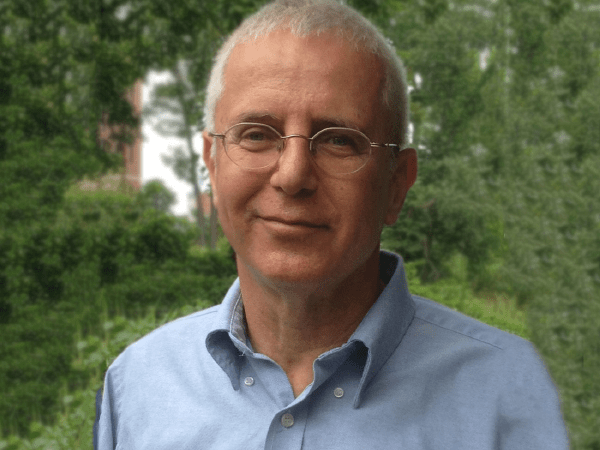Although there are more than 11 million LGBTQ+-identifying individuals in the U.S., this population remains “invisible in the research”—presenting a problem for cancer centers trying to better serve their catchment areas, said Zul Surani, associate director of community outreach and engagement at Cedars-Sinai Cancer.
“How do we recruit these communities for clinical trials, when we really don’t know what the top cancers are that affect this population?” Surani said to The Cancer Letter. “This movement to think about policy and being inclusive will eventually lead to making this community more visible in the cancer literature, in the data. Then we’ll really be able to address inequities.”
Surani is a co-chair of the LGBTQ+ Cancer Symposium, hosted by Cedars-Sinai Cancer Center June 2-3. At the symposium, oncologists, health researchers, and community organizers will gather in Los Angeles to discuss ways to make cancer care more inclusive of LGBTQ+-identifying patients.
Topics addressed at the symposium will include:
- Increasing LGBTQ+ representation in cancer registries and clinical trials
- Learning from successful models of inclusive care, such as the LA LGBT Center and the Fenway Institute
- Developing community outreach and policy initiatives


Gender and sexuality are inextricable from health, and doctors need to understand their patients’ identities to provide the best care possible, said BJ Rimel, LGBTQ+ Symposium co-chair, medical director of the Cedars-Sinai Cancer Clinical Trials Office, and associate professor of obstetrics and gynecology in the Division of Gynecologic Oncology at Cedars-Sinai Cancer.
“If a patient comes in for a complaint of a cough, and we don’t capture their sex and gender information—it may be not necessary, a cough is a cough—but maybe that cough is because they are socially smoking,” Rimel said to The Cancer Letter. “In the LGBTQ+ community, tobacco use is much higher, so we know that that’s an important place where we can strategize to help with screening and hopefully tobacco cessation programs. But if we don’t ask the right questions, we’re not targeting the interventions appropriately.”
In gynecologic oncology, for example, having a clear picture of a patient’s social context—and knowing who their caregivers are—can inform decisions related to fertility, Rimel said.
“In cancer care, we’re providing care to the patient who has it, but also to the caregivers, and providing them with resources,” Rimel said. “If we don’t know who those caregivers are, or we’re not willing to talk to them, we’ve really sold that patient a less good version of their care.”
Yet gathering information on patients’ gender and sexuality is complicated by a long history of shame, stigma, and discrimination directed towards LGBTQ+ people, Rimel said.
Sexuality cannot be disconnected from other parts of one’s identity and social status.
Zul Surani
“Hiding has been part of our culture for a really long time,” Rimel said. “Sex and gender are often taboo topics in lots of different cultural places. It has not always been very easy for us in the LGBTQ+ community to come out.”
This is gradually changing, but disparities in health data remain, Rimel said.
“In my lifetime, I’ve experienced a dramatic shift, from having to come out to people on a one-on-one basis and making sure they don’t tell anybody, to being able to be completely open in my personal and professional life,” Rimel said. “It’s really made a dramatic difference in my quality of life as a human and in my quality of care as a patient. I imagine others may feel the same, but without that data to help guide us, we’re kind of guessing.”
Gender and sexuality impact every part of cancer care, starting with screening.
“Cancer screening tends to be gendered. Look at all the guidelines—there’s male and female,” Surani said. “There will be a presentation on how we talk about cancer screening in an inclusive way with LGBTQ+ populations, so they’re better engaged and they have the power to be able to ask all the right questions with their providers.”
Rimel, who will deliver that presentation, and her colleague, Toby Datta, are using national survey data to investigate cancer screening among LGBTQ+ communities and the particular needs of sub-groups.
“Screening for HPV-related disease is primarily done via a pelvic exam, and that’s not easy for all of our folks,” Rimel said. “The type of screening that we’re doing is slowly evolving. We’re wondering if we can do more self-sampling and other kinds of tests that may be better for folks, especially those who are uncomfortable with exams for any reason—and then teaching providers to be more sensitive about how those exams happen and what people may think or feel about them.”
As part of the goal of making care more inclusive, the symposium will address specific initiatives aiming to increase representation of LGBTQ+ individuals in cancer data.
“There’s a movement out of California through the California Dialogue on Cancer that is working on expanding the data dictionary to include LGBTQ+ populations, so that they’re no longer invisible and we better understand the cancer burden,” Surani said.
Hiding has been part of our culture for a really long time. Sex and gender are often taboo topics in lots of different cultural places. It has not always been very easy for us in the LGBTQ+ community to come out.
BJ Rimel
Cedars-Sinai is developing a strategy to better represent sexual and gender minorities in its clinical trial data and medical records. Even if the healthcare system does have information on patients’ genders and sexualities, actually capturing that data and understanding the bigger picture presents a challenge, Rimel said.
“We’ve made a big push to get that data captured,” Rimel said. “Once we have it, we can start to understand what’s missing and what’s there. What are the things that surprise us? What are the things that don’t surprise us? From that data, hopefully we’ll be able to be a better service to our community.”
Recognizing the intersection of race, sexuality, and gender will also guide discussions at the symposium, Surani said.
“The other component of this is, how do we include LGBTQ+ communities of color? People who belong to multiple minority groups are further marginalized, and as a result, they may receive partial care, or we just don’t see the full picture of what is happening with them,” Surani said. “Sexuality cannot be disconnected from other parts of one’s identity and social status.”
Rimel said she hopes the conference will spark discussion and open new doors in research.
“In 10 years, I’ve really seen the ability to talk about this publicly. I’ve seen interest, I’ve seen people starting to gather data and write papers,” Rimel said. “People come up to me—no longer in hushed tones in the bathroom, saying, ‘I heard that you take care of lesbian patients, can I send you one?’ Now, people email me and they have banners with their own pronouns on them.
“Nothing is ever perfect, and there’s still enormous work to be done, but I think we’re at least on a much more hopeful road and in a much more open place than we were when I started out.”










